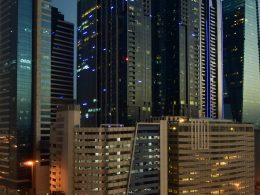The COVID-19 pandemic, which has shaken the foundations of our world, has left an indelible mark on a wide range of industries, and the global real estate market is no exception. As I delve into the intricate web of factors influencing this sector, I’ll explore the pandemic’s impact on property values, urban migration trends, and the enduring relevance of real estate as an investment in this uncertain era.
Introduction

The pandemic’s onset in early 2020 brought with it a sense of uncertainty that rippled through every corner of the global economy, including the real estate market. The industry, known for its resilience and stability, was tested in ways never seen before.
Property Values: A Rollercoaster Ride
One of the most striking effects of COVID-19 on real estate was the rollercoaster ride in property values. In many urban areas, especially in the early days of the pandemic, home prices dropped as people fled cities for suburbs and rural areas in search of space and safety. However, the tide soon turned, and prices skyrocketed as low-interest rates and increased demand for larger, more remote properties fueled a buying frenzy.
This volatility was not limited to residential properties. The commercial real estate sector faced its own set of challenges as businesses grappled with remote work and reconsidered their office space needs. The demand for traditional office spaces dwindled, causing a dip in property values. On the flip side, the industrial real estate market, driven by e-commerce and logistics, saw a surge in demand.
Urban Migration and the ‘Work-From-Anywhere’ Revolution
The pandemic accelerated urban migration trends, with many city dwellers seeking the tranquility of suburban life or remote locations. Companies, too, embraced remote work arrangements, raising questions about the future of central business districts.
The concept of “live, work, and play” took on new meaning as people sought properties that could accommodate their professional and personal lives simultaneously. This shift not only impacted housing markets but also influenced commercial real estate as employers rethought their office space needs.
Real Estate Investment: A Safe Haven?
Throughout the pandemic, real estate remained a tangible and historically stable asset, often considered a safe haven during economic turmoil. This perception led to an increase in real estate investment, both from individuals and institutions.
While this influx of capital boosted property values in some areas, it also raised concerns about affordability and accessibility. As investors chased returns, it became increasingly challenging for average homebuyers to enter the market, particularly in highly desirable areas.
Conclusion
The COVID-19 pandemic has reshaped the global real estate landscape in profound ways. Property values swung on a pendulum, urban migration trends altered the geography of work and home, and real estate investments became more attractive than ever. As the world adapts to the post-pandemic reality, the long-term implications of these changes remain a topic of ongoing debate.
In the realm of real estate journalism, staying attuned to the evolving dynamics of this market is essential. Our ongoing coverage will continue to explore the multifaceted effects of the pandemic on real estate and provide insights into the trends shaping the future of this crucial sector.












